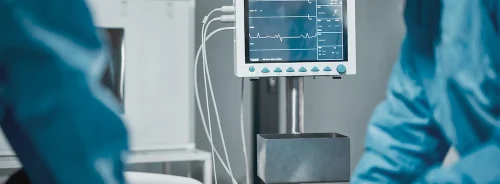ICU Management & Practice, ICU Volume 12 - Issue 2 - Summer 2012
Introduction
In the US alone, up to 1,000,000 emergent intubations are performed annually in the acute care setting, both in and out of hospital (Weingart et al. 2012; Wang et al. 2011; National Emergency Number Associtation 2011). Meanwhile, multiple studies have demonstrated varying rates of successful endotracheal intubation (ETI). While anesthesiologists and emergency physicians exhibit ETI success rates in excess of 95 percent in acutely ill and injured patients, paramedics demonstrate ETI success rates as low as 45 percent, highlighting the disparity of skills between care providers. Success rates with emergent ETI do improve with clinical experience, research has shown (Wang et al. 2011; Hubble et al. 2010; Wang et al. 2005; Bushra et al. 2004). It is estimated that 20 clinical ETI attempts may be required to attain a 90 percent success rate; however, clinical opportunities for novice providers to practice procedures in acute medicine are limited (Warner et al. 2010; Tarasi et al. 2011). Since there are a finite number of clinical opportunities for airway management available, we must improve our current educational practices to provide enhanced feedback to the learner and accelerate the ETI learning curve.
Current limitations in training and clinical experience may hinder a novice provider’s acquisition of ETI skills and maintenance. ETI is commonly conceptualised as the combination of:
• Movement of the provider’s body and patient’s head and neck; to
• Achievement of the best possible visualisation of the airway structures for passage of the endotracheal tube.
However, no data describes how gross and fine motions of the airway operator translate to optimal airway visualisation, whether using direct laryngoscopy (DL), video laryngoscopy (VL), or flexible fibreoptics. The inability to visualise the vocal cords during ETI is the most common reason for failed attempts. Current training techniques are often unstructured and have few specific objectives for altering provider kinematics. An improved understanding of the motions involved in ETI and their connection with airway exposure and visualisation could impact airway education practices, thus shedding light on the yet unrecognised actions needed to accomplish ETI and improve patient outcomes. VL is one tool that may help to improve airway education.
Video Laryngoscopy: Where Does it Fit in?
VL is a relatively new technology whereby a micro-video camera is attached to the laryngoscope blade adjacent to the light source, thereby magnifying and improving the angle of view of the glottis. A wide variety of VL devices have entered the market, each with differing angulation, light quality, screen size, magnification power, and ease of recording capability. Depending on the device, the laryngoscope can be used as either a direct laryngoscope where the structures of the airway are directly visualised by the provider, or more commonly as an indirect laryngoscope where the provider visualises the anatomic structures of the airway captured by the camera on a screen, similar to bronchoscopes and endoscopes.
Multiple reviews suggest that VL improves glottic view when compared to direct laryngoscopy (Griesdale 2012). It remains unclear whether improved view is correlated with improved first pass success in a wide variety of arenas where airways are managed (prehospital, emergency departments, operating theatres, inpatient wards, intensive care units), and by novices and expert airway providers in DL and other airway devices. However, evidence that VL achieves a higher first attempt success rate than DL is accumulating through a wide variety of comparisons (Aziz 2012, Aziz 2011, Sakles 2012). Caution should be exercised in lumping together studies of different devices categorised as video laryngoscopes, as the majority of past studies had different comparator control arms, subjects, airway operators, patient populations, convenience sampling, endpoints, and focused on different areas in acute medicine, which is beyond the scope of this article.
It is evident that video laryngoscopes open the door to new teaching modalities regarding airway management in acute or emergent settings. As many of these devices have large external screens, the provider can more easily visualise the airway structures in real-time. These devices also provide the instructor with a matching, or near identical, view of the airway as that seen by the trainee. They, therefore, have the potential to eliminate the “What do you see?” question from the instructor and help to reduce anxiety during the already stressful situation of acute airway management. Video laryngoscopes have different indirect views of the glottis, so a few seconds of setup time is required to turn on the device or recording system.
Many of these devices also have the ability to record the ETI attempt for off-line review. These recordings can be used in the classroom setting to offer trainees actual views of airways which present various challenges (blood, vomit, laryngeal mass, and so on). Trainees can then be more prepaired for these cases when they meet them in the clinical realm.
A Teaching Tool With Objective Analysis
Over 100 ETI’s performed by flight crews on a single helicopter emergency medical service, using a VL (C-MAC, Karl Storz Corp.), were reviewed. Several variables known to be associated with ETI success (Cormack-Lehane view, Percentage of Glotic Opening (POGO) score) were extracted from videos. VL also allows for assessment of other variables, which were previously unavailable using traditional DL, including the number of forward movements made with the endotracheal tube and various time intervals. Time intervals in this study started when the laryngoscope blade first crossed the lips (time zero), continuing until the vocal cords were first visualised (entry to cord time), the best view of the glottic opening was obtained (entry to POGO time), the endotracheal tube first appeared in view (entry to tube time), and ended at completion of the ETI attempt (attempt time), whether successful (passed through the cords) or unsuccessful, where the blade was withdrawn past the lips.
The Cormack-Lehane view and POGO score predicted ETI success, whilst the number of forward movements of the endotracheal tube did not; neither did the attempt time. Successful and unsuccessful attempt times were similar: 28.4 seconds versus 35.8 seconds (P=0.181); however entry to POGO time (16.6 seconds versus 32.1 seconds) and entry to tube time (17.6 seconds versus 27.4 seconds) were shorter during successful ETI attempts (P=0.113 and P=0.04 respectively).
It was also noted that successful attempts followed a characteristic pattern during ETI, which was reflected in the time intervals (Table 1).
Further analysis on how to teach and improve upon each of these component steps in VL may shed light on how to improve the overall performance of VL. As with any new motor skill, repetition and deliberate practice of specific steps is necessary, combined with timely feedback, similar to coaching competitive athletes or performers.
Preventing Skill Decrement and Improving Learner Success
Moving into a new era of laryngoscopy, uncertainty exists on whether DL will remain a viable technical skill to maintain. Maintenance of proficiency in airway management encompasses both technical and non-technical (decisionmaking) skills, which is usually only attained with continuous practice and commitment to improving performance (Baker 2011). Using simulation and VL as teaching tools allow consistency in measurement and assessment of airway manipulation. Teaching DL, on the other hand, remains an important skill to maintain for situations when the technology for VL fails (blood completely obscuring video, fibreoptic malfunction, battery outages).
Video laryngoscopes that allow for teaching and assessment of both DL and VL technical skills will be important, as airway education encompasses teaching for rare events. With the high success rate and increasing adoption of indirect VL, airway educators will need to pay even greater attention to the situations where VL fails. At a time when an increasing number of airway manipulations are performed in very disparate locations by a heterogenous provider mix, routine review of video recordings may provide quality assurance and improvement.
Conclusion
Recorded direct video laryngoscopes provide valuable information to the instructor, not only during the intubation attempt, but also in educating future providers by identifying deficiencies or skills that resulted in unsuccessful or successful attempts. This technology finally allows for objective analysis of a procedural skill and can allow us as educators to provide more effective feedback to our trainees.
References:
Aziz, MF et al. (2012). Comparative Effectiveness of the C-MAC Video Laryngoscope versus Direct Laryngoscopy in the Setting of the Predicted Difficult Airway. Anesthesiology, 116(3): 629-636.
Aziz, MF et al. (2011). Routine clinical practice effectiveness of the Glidescope in difficult airway management: an analysis of 2,004 Glidescope intubations, complications, and failures from two institutions. Anesthesiology, 114: 34-41.
Bushra, JS et al. (2004). A comparison of trauma intubations managed by anesthesiologists and emergency physicians. Acad Emerg Med, 11(1): p. 66-70.
Carlson, JN et al. (2012) Variables associated with successful intubation attempts using video laryngoscopy: a preliminary report in a helicopter emergency medical service. Prehosp Emerg Care, 16(2): p. 293-8.
Griesdale, DE et al. (2012). Glidescope video-laryngoscopy versus direct laryngoscopy for endotracheal intubation: a systematic review and meta-analysis. J Can Anesth, 59: 41-52. National Emergency Number Association. http://nena.org/911-statistics.
Hubble, MW et al. (2010). A meta-analysis of prehospital airway control techniques part I: orotracheal and nasotracheal intubation success rates. Prehosp Emerg Care, 14(3): p. 377-401.
Nishisaki, A et al. (2012). Effect of just-in-time simulation training on tracheal intubation procedure safety in the pediatric intensive care unit. Anesthesiology, 113(1): p. 214-23.
Tarasi, PG et al. (2011). Endotracheal intubation skill acquisition by medical students. Med Educ Online, 16.
Wang, HE et al. (2005). Defining the learning curve for paramedic student endotracheal intubation. Prehosp Emerg Care, 9(2): p. 156-62.
Wang, HE et al. (2011). Out-of-hospital airway management in the United States. Resuscitation, 82(4): p. 378-85.
Warner, KJ et al. (2010). Paramedic training for proficient prehospital endotracheal intubation. Prehosp Emerg Care, 14(1): p. 103-8.
Weingart et al. (2012). Estimates of sedation in patients undergoing endotracheal intubation in United States emergency departments. In Press, American Journal of Emergency Medicine.
Sakles, JC et al. (2012). “A Comparison of the C-MAC Video Laryngoscope to the Macintosh Direct Laryngoscope for Intubation in the Emergency Department”. Ann Emerg Med, in press e-pub ahead of print.





